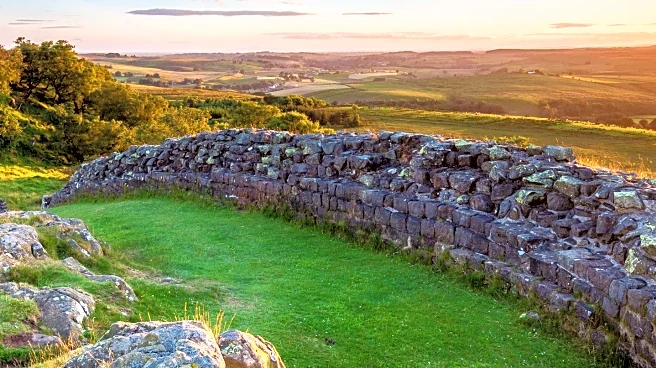What's Happening?
A recent study published in PLOS ONE has provided new insights into the development of urban civilization in ancient Mesopotamia, specifically the Sumerian civilization. The research, led by Liviu Giosan from the Woods Hole Oceanographic Institution and
Reed Goodman from Clemson University, suggests that natural forces, particularly the interaction between rivers, tides, and sediments, played a crucial role in the emergence of Sumer. The study indicates that tidal rhythms influenced early agriculture and social organization, with predictable tidal patterns providing water and fertile soil. This environmental dynamic was integral to the development of Sumer's city-states, such as Ur, Uruk, and Lagash, which became centers of political and religious innovation.
Why It's Important?
The findings of this study challenge the traditional view that human ingenuity alone was responsible for the rise of early civilizations. By highlighting the role of natural forces, the research underscores the importance of environmental factors in shaping human history. This has broader implications for understanding how ancient societies adapted to their environments and how these adaptations influenced cultural and technological advancements. The study also provides a historical perspective on the relationship between environmental change and societal development, offering lessons for modern societies facing environmental challenges.
What's Next?
The study's conclusions may prompt further research into the environmental factors that influenced other ancient civilizations. Archaeologists and historians might explore similar dynamics in different regions to better understand the interplay between natural forces and human development. Additionally, the findings could influence contemporary discussions on sustainable development and environmental management, as they highlight the potential for natural forces to drive innovation and societal change.
Beyond the Headlines
The research connects Sumerian cultural identity to its environmental context, suggesting that myths and religious practices were deeply intertwined with the region's natural landscape. This highlights the potential for interdisciplinary research to uncover new dimensions of historical narratives, blending geology, archaeology, and cultural studies to provide a more comprehensive understanding of ancient societies.













